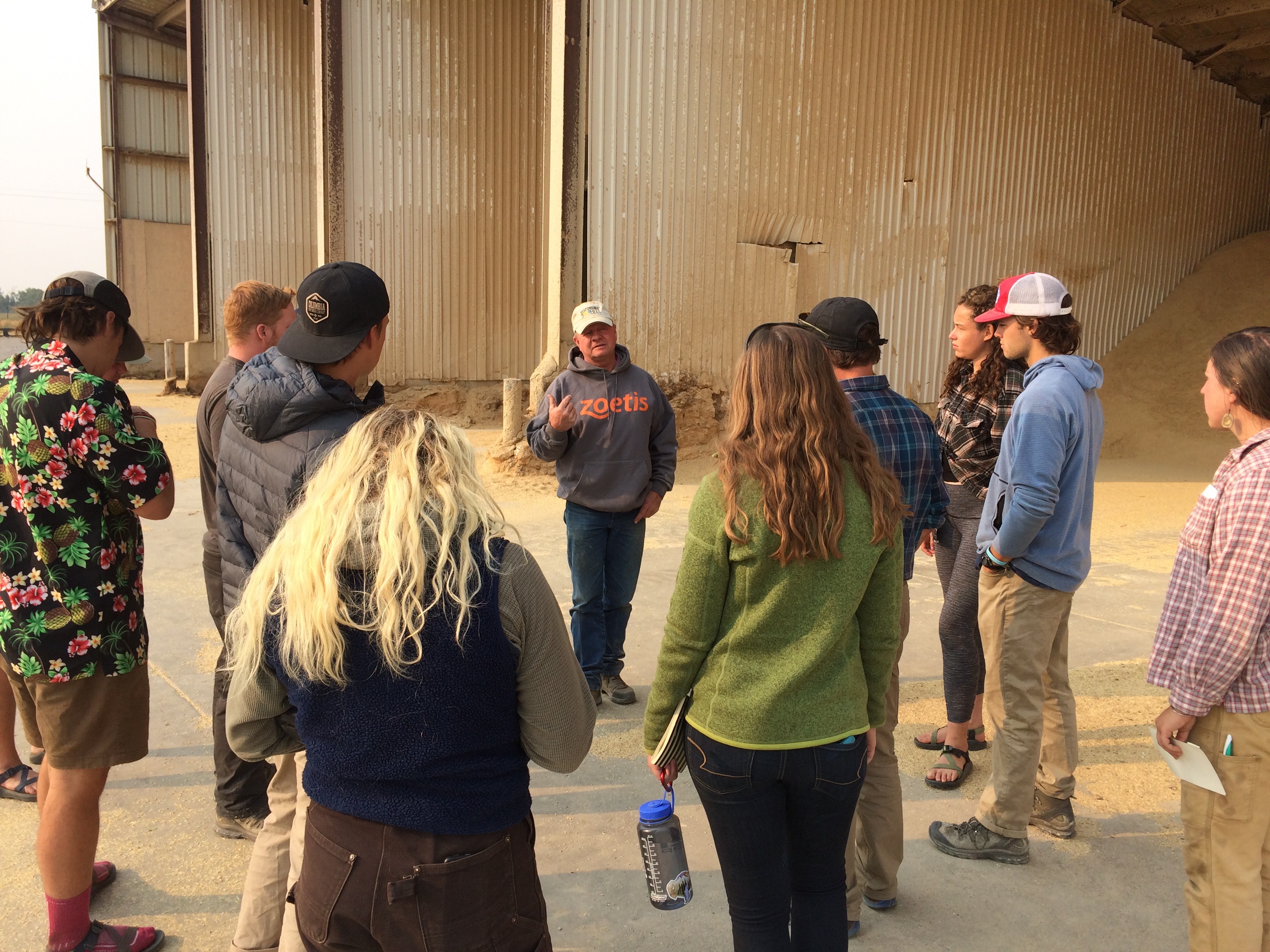
Stuffed with 13 stinky backpackers, our beloved WRFI van, Dolly pulled up to Cody Yeager’s feedlot in Choteau, Montana. Surrounded by gray skies and prairie land on either side of the road, I tumbled out of the van onto an industrial farm-scape. My feet sank into a brown sludge of mud, cow poop and grain as the prairie wind blew and inundated my nostrils with the putrid smell of cow waste.
I began running through the negative assumptions I had made about feedlots, the people who owned them and “factory farming.” I expected to be confronted with a red-faced nationalist wearing a “Make America Great Again” hat, a man consumed with making money and advocating for the importance of big business—set on making it even at the expense of the people, landscape, and animals around him.
To the contrary, I was greeted by the good-hearted Cody, a sweet middle-aged man with rough hands, a warm smile and a deep love for animals and people alike—bringing them together with a big ‘ol pile of American raised beef. I encountered cows who were treated humanely, and kept healthy. A business run by a man with an exceptional commitment to community and sustaining community-run business.
After an introduction, we got a tour of the feedlot—a medium sized lot, averaging about 8,000 head of cattle at any given time–that Cody took over about 15 years ago. Cody’s father, originally a rancher, built the feedlot in the late 1970’s in response to an increasing demand for high quantities of beef coupled with the reduction of beef prices that made ranching economically unfeasible for many families in the West. Pressured by a market dictated by efficiency, Cody and his family, were forced to grow or die; and so they grew.
The feedlot buys calves and young cows from grass-fed ranches within the area and generally aims to add between 700 and 1000 pounds to the animal before sending it off to slaughter. Cody made it clear that a moral tenant of his business was to minimize waste and keep production input as local as possible by sourcing animal feed from local businesses. Each cow is fed a mix of fattening grains, primarily sourced from the agricultural byproducts of other surrounding businesses (such as barley from local breweries). Faced with the pressures of competing with supersized beef production corporations minimizing profit margins and maximizing infrastructure costs, Cody has remained committed to working with his local agricultural community—an effort that has provided both a financial benefit for him and a boost to the Choteau agricultural economy.
To say all of this, of course, is not to make any statement about feedlots as a whole, or to excuse moral or environmental injustices that are often associated with them (and, in many cases, rightly so), but rather to point out that there is a network of good people behind every sweeping assumption made about environmentally questionable practices. It is to point out that any environmental issue—especially those in which people’s economic welfare is involved–is much more nuanced than “feedlots are bad.” It is an attempt to give a small voice to those often villainized.
While it is easy to criticize every environmentally unfriendly business, especially industrial agriculture, I think it is of paramount importance in solving any issue to understand that the people involved in these systems are doing what they do because they need to financially survive. It is not that they lack a moral compass and disregard environmental or ethical standards, it is that they need to make a living and support their family.
It brings forth the idea that in establishing a land ethic and formulating opinions about human-powered ecological destruction, one must remember to humanize the people behind the larger systems. It becomes important to remember that resistance to moving towards environmentally friendly practices, especially in rural environments, is rarely founded in mal intent, but is rather founded in people’s effort to maintain economic stability. Cody, for example, pointed out that ranchers and feedlot owners alike are often very weary of environmental degradation because they rely on it for their livelihood. And so, the next question is: how do we balance ecological well-being with human welfare when the two are often at odds?